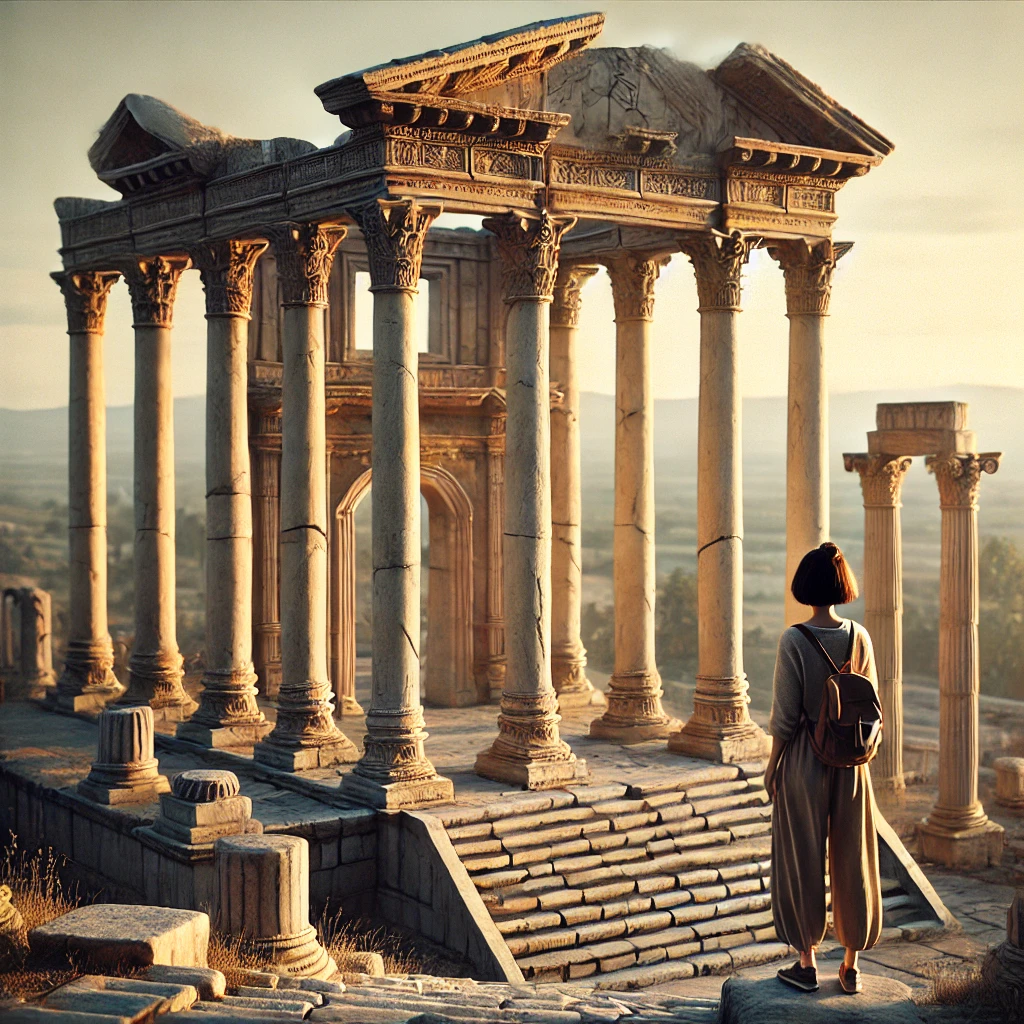ChatGPT:
Volubilis is an ancient Roman city located near Meknes in Morocco, known for its well-preserved ruins. It was an important Roman outpost and one of the empire’s most remote cities in North Africa. Established around the 3rd century BCE, it flourished under Roman rule from the 1st century CE until it was abandoned around the 11th century.
The ruins have been a UNESCO World Heritage Site since 1997, attracting visitors interested in ancient history, architecture, and Morocco’s unique Roman heritage.

Origin of Volubilis
Volubilis was originally founded by the indigenous Berber people around the 3rd century BCE. It began as a modest settlement in the fertile plains of northern Morocco, taking advantage of its strategic location near the Oued Khoumane River and the rich agricultural land surrounding it. Its proximity to the Atlas Mountains and major trade routes connecting North Africa with the Mediterranean made Volubilis a hub for commerce and agriculture.
Roman Influence and Development
Volubilis rose to prominence under the Roman Empire, especially after the region became part of the Roman province of Mauretania Tingitana in 44 CE, following the annexation of the Kingdom of Mauretania. Under Roman rule, Volubilis developed into a thriving city, benefiting from extensive trade in olive oil, grains, and other agricultural products. The city reached its zenith in the 2nd and 3rd centuries CE, with an estimated population of 20,000 inhabitants.
Key architectural advancements during this period included the construction of:
- The Basilica: A grand administrative building used for legal proceedings and civic functions.
- The Triumphal Arch: Built in honor of Emperor Caracalla in 217 CE, it symbolized Roman authority and marked the city’s importance.
- Public Baths and Houses: Roman baths, houses adorned with intricate mosaics, and olive oil presses reflected the city’s prosperity.
Volubilis became the administrative center of the region, and its streets followed the typical Roman grid pattern. It was also the center of a strong agricultural economy, especially known for its olive oil production, which was exported across the empire.
Decline and Later History
With the decline of the Roman Empire in the 3rd century CE, Volubilis began to lose its importance. By 285 CE, Roman control had largely receded from the region, and the city fell into a period of gradual decline. However, the Berber population continued to live in the city, and Volubilis retained a degree of local significance.
In the 7th century, Volubilis experienced another wave of occupation, this time by the early Islamic forces. By then, the city’s Roman character had diminished, and it became part of the emerging Islamic world. Eventually, it was abandoned, likely due to its remote location and shifts in political power during the rise of the Idrisid dynasty in nearby Fez.
Rediscovery and Modern Development
Volubilis fell into obscurity and was slowly covered by earth over the centuries. It wasn’t until the French colonial period in the early 20th century that systematic excavations began to uncover the city’s remarkable remains. These excavations revealed some of the best-preserved Roman ruins in North Africa.
The site was added to UNESCO’s list of World Heritage Sites in 1997, highlighting its cultural and historical significance. Today, ongoing archaeological work continues to unearth new parts of the city, and it is a popular tourist destination known for its stunning mosaics and well-preserved Roman architecture.
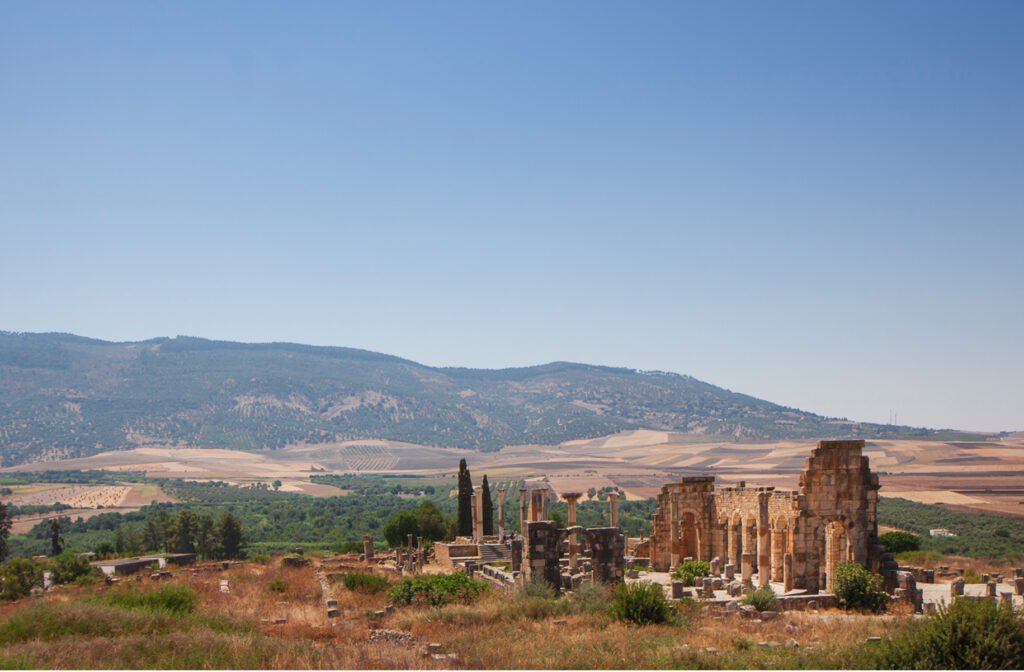
The ruins of Volubilis are some of the best-preserved Roman remains in North Africa. Key structures and ruins that can still be seen today include:
1. The Triumphal Arch of Caracalla (217 CE)
- Built in honor of the Roman Emperor Caracalla and his mother, Julia Domna, this arch stands at the end of the main street (decumanus maximus) and is a prominent symbol of Roman authority in Volubilis.
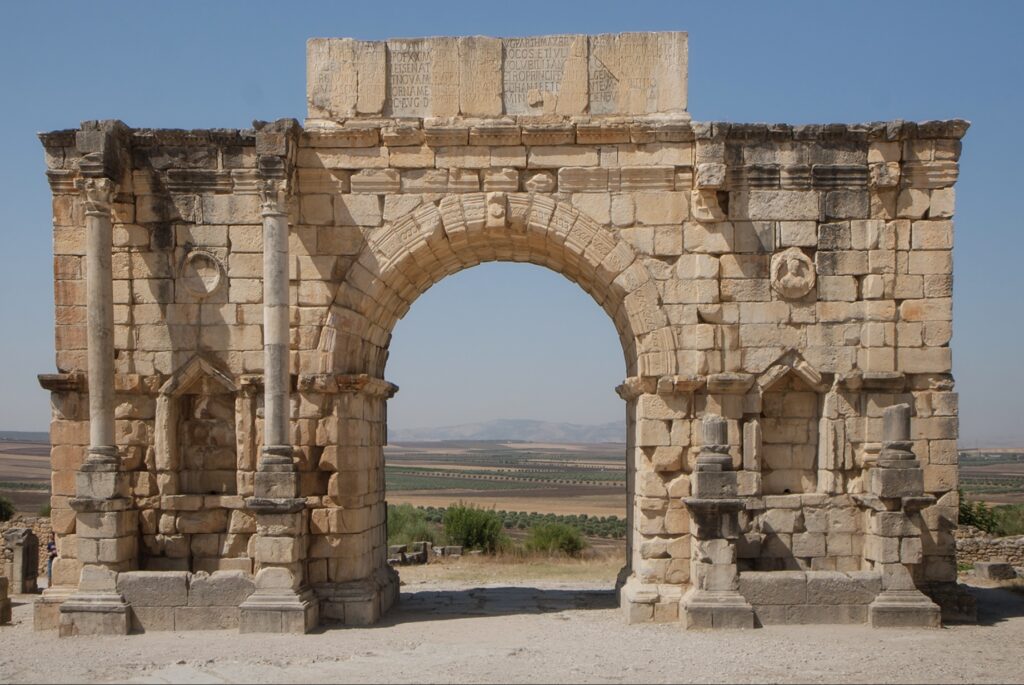
2. The Basilica (early 3rd century CE)
- The basilica was used as a courthouse and for administrative functions. It is one of the city’s largest structures and is located near the forum. Its columns and arches remain impressive.
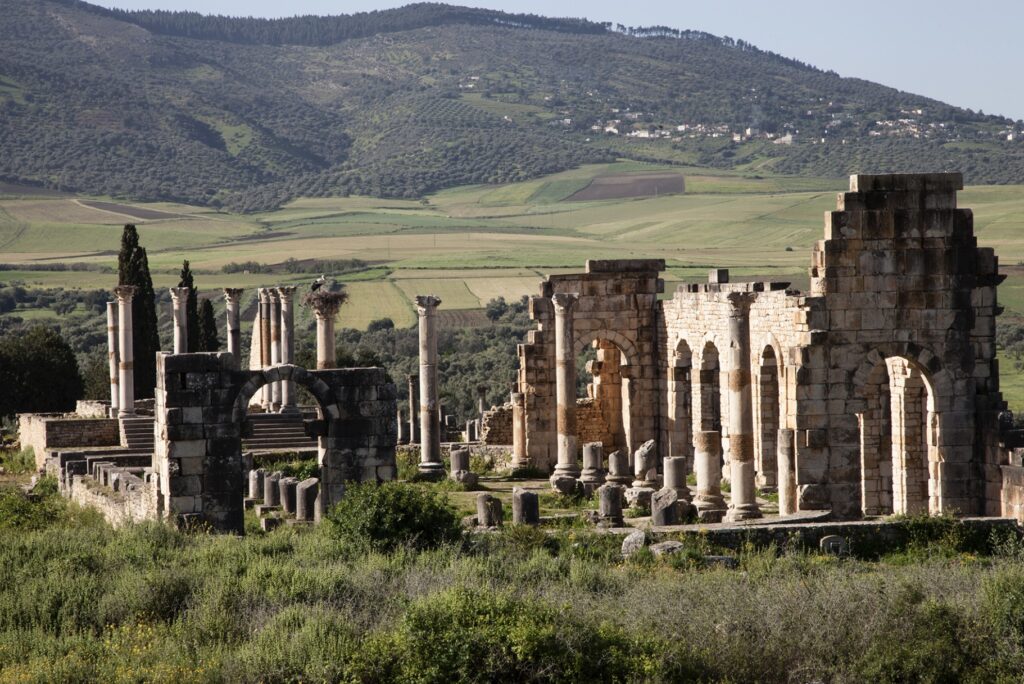
3. The Forum (1st century CE)
- Located adjacent to the basilica, the forum was the city’s central public space, where political and commercial activities occurred.
4. Capitol Temple (2nd century CE)
- The temple was dedicated to the Roman Capitoline Triad (Jupiter, Juno, and Minerva) and served as a religious center for the city’s inhabitants.
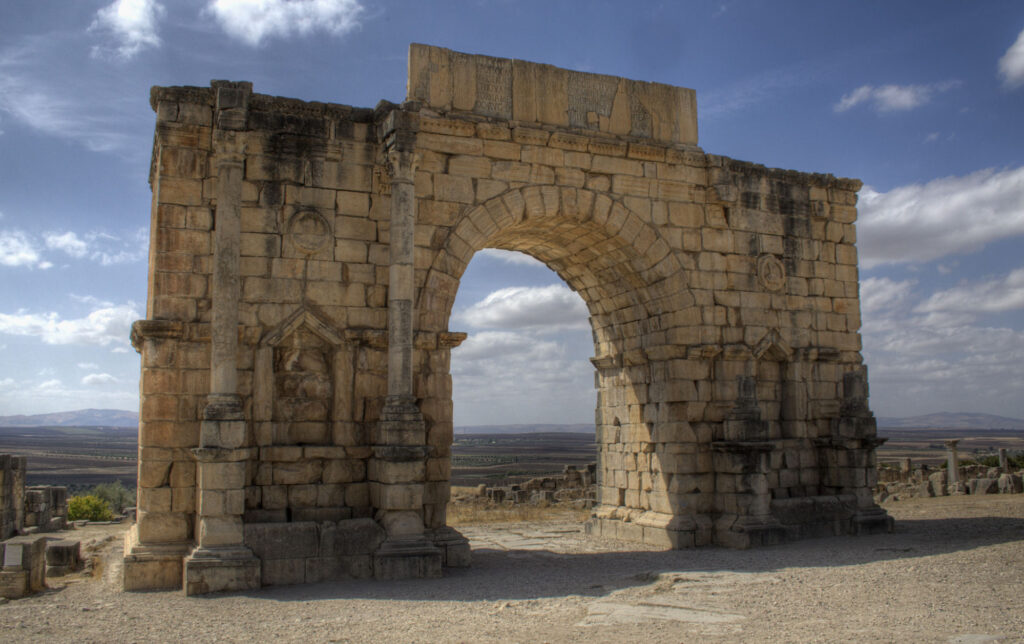
5. Roman Houses with Mosaics (2nd–3rd century CE)
- Several homes, known for their intricate mosaic floors, still exist. Notable mosaics include:
- House of Orpheus: Famous for its depiction of the musician Orpheus playing a lyre.
- House of the Labors of Hercules: This house features mosaics illustrating the twelve labors of Hercules.
- House of the Knight: Known for mosaics of mythological scenes, including dolphins and sea creatures.
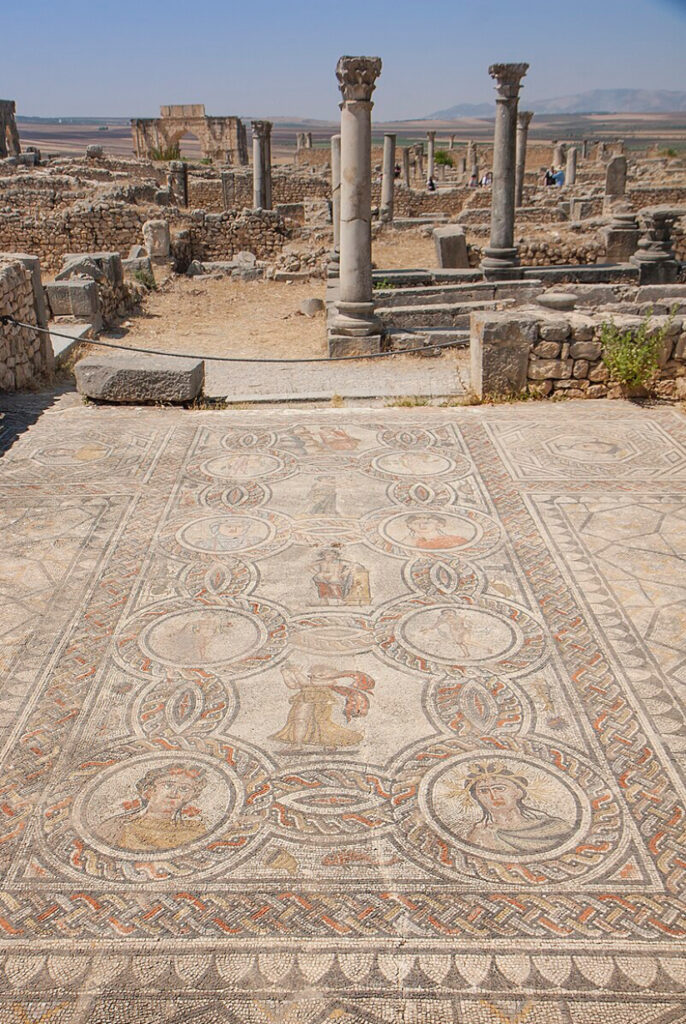
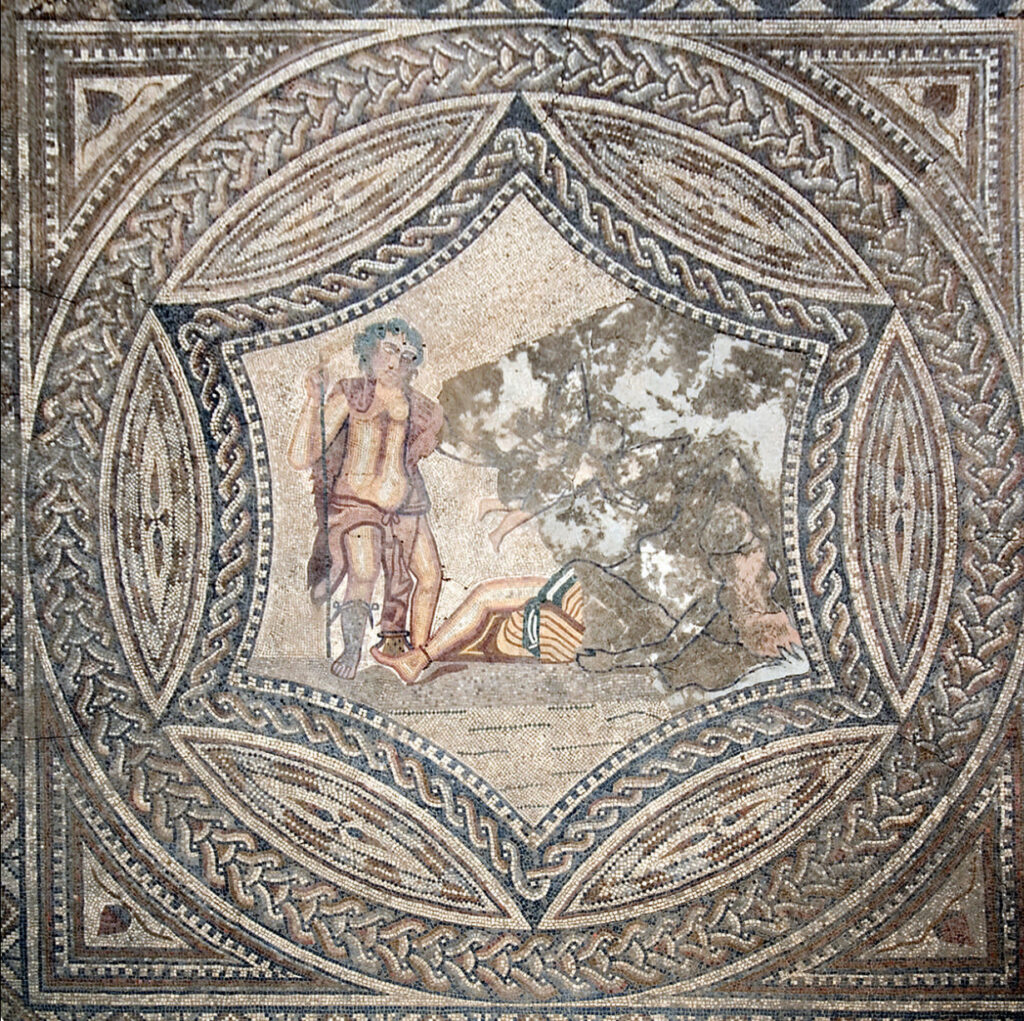
6. Public Baths (2nd–3rd century CE)
- Volubilis had several bath complexes, a key part of Roman life. The baths include the frigidarium (cold room), tepidarium (warm room), and caldarium (hot room), though much of the roof is gone.
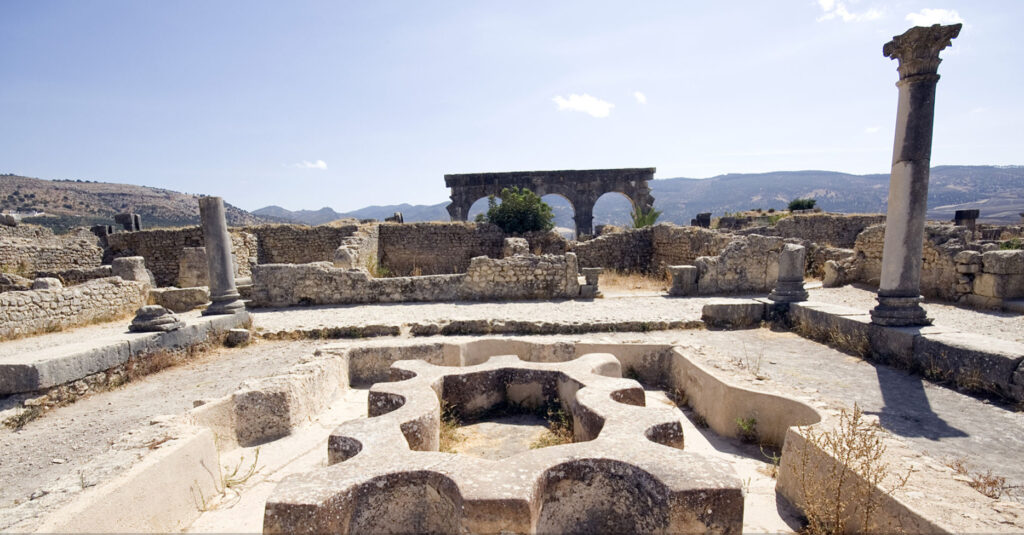
7. The Decumanus Maximus (1st–2nd century CE)
- This was the main road running through the city, along which many key public buildings and houses were located.
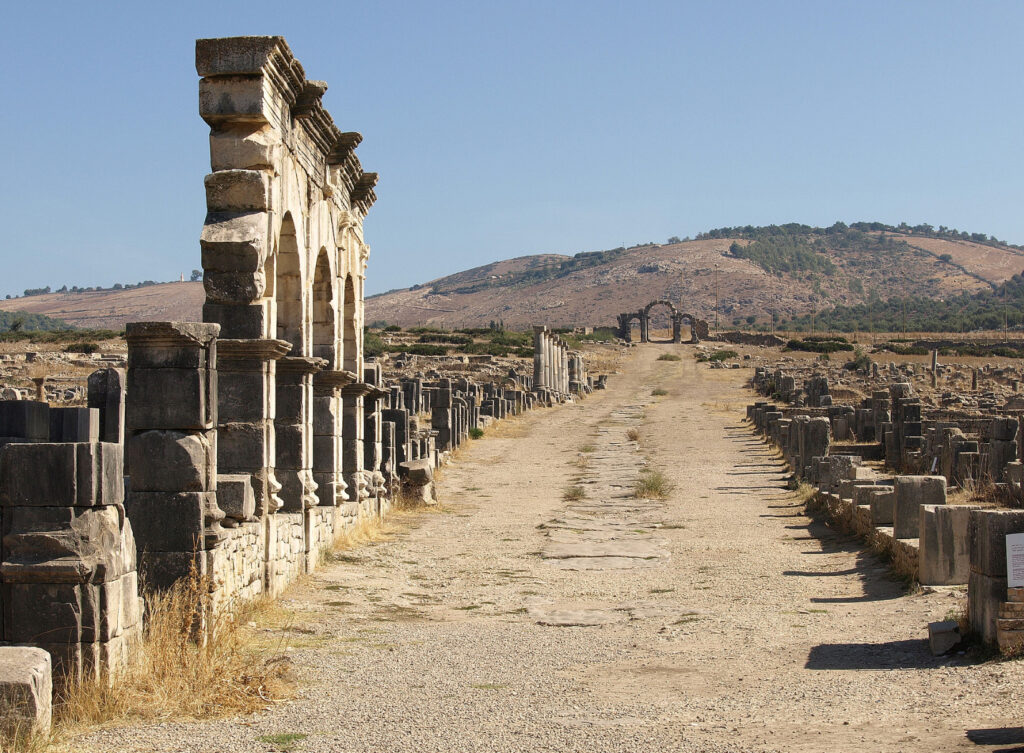
8. Olive Oil Presses and Storage Areas (2nd–3rd century CE)
- Volubilis was a major center of olive oil production. Several presses and storage containers for oil have been excavated, revealing the city’s agricultural prosperity.
9. City Walls and Gates (1st century CE, later modifications)
- The city was originally fortified by walls, some of which still stand. These defenses were periodically enhanced during later centuries.
10. The Tingis Gate (2nd century CE)
- The gate served as an entrance to the city and connected Volubilis to the road leading to the coastal city of Tingis (modern-day Tangier).
These ruins reflect the city’s status as a vital Roman outpost and provide insight into both the public and private lives of its inhabitants during its peak.
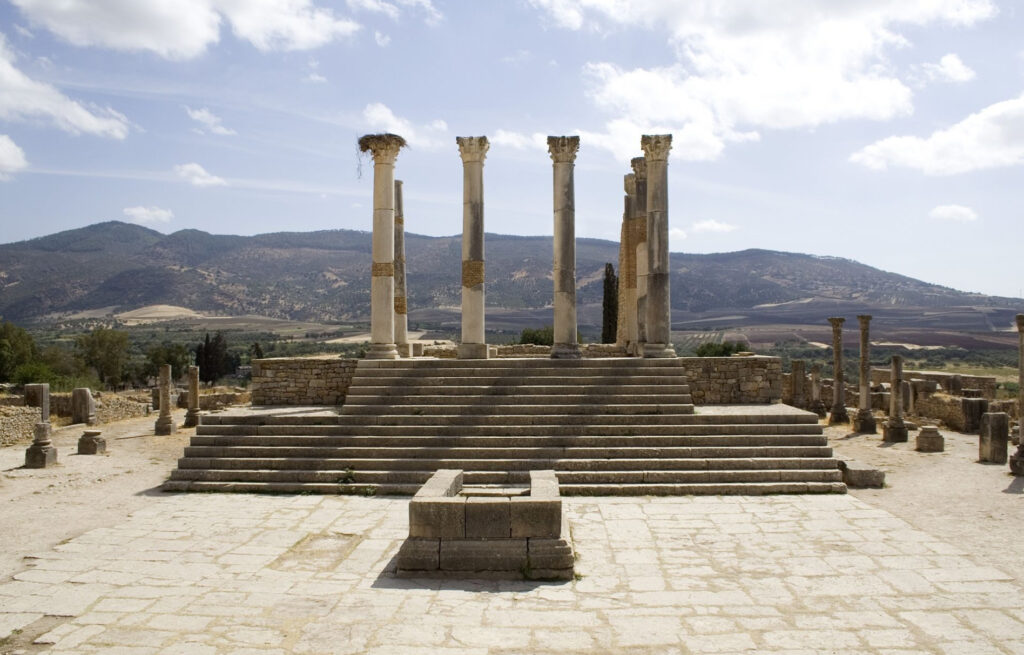
One-Day Itinerary for Visiting Volubilis
Morning:
- 9:00 AM – Arrival at Volubilis
Begin your day by arriving at the ancient city of Volubilis early in the morning to avoid the midday heat. Take a guided tour (or self-guided walk) to explore the ruins: - Start with the Triumphal Arch of Caracalla and walk along the Decumanus Maximus, the city’s main street.
- Visit the Capitol Temple and the Forum to understand the religious and political life of the city.
- Marvel at the intricate mosaics in the House of Orpheus, House of the Labors of Hercules, and other preserved homes.
- Head to the Basilica and public baths, imagining the civic life of ancient Roman settlers. Duration: 2.5 hours.
12:00 PM – Lunch Break in Moulay Idriss
- After exploring Volubilis, drive or take a taxi (about a 5-minute drive) to the nearby town of Moulay Idriss for lunch. Moulay Idriss is a picturesque, historic town that holds significant religious value in Morocco.
- Enjoy traditional Moroccan dishes at a local restaurant, such as Tagine (meat or vegetables cooked in a clay pot with spices), Couscous, or Pastilla (a savory-sweet pastry filled with meat and spices).
- Recommended restaurant: Scorpion House – a rooftop restaurant with a beautiful view of the town and surrounding hills, known for its local, freshly prepared meals.
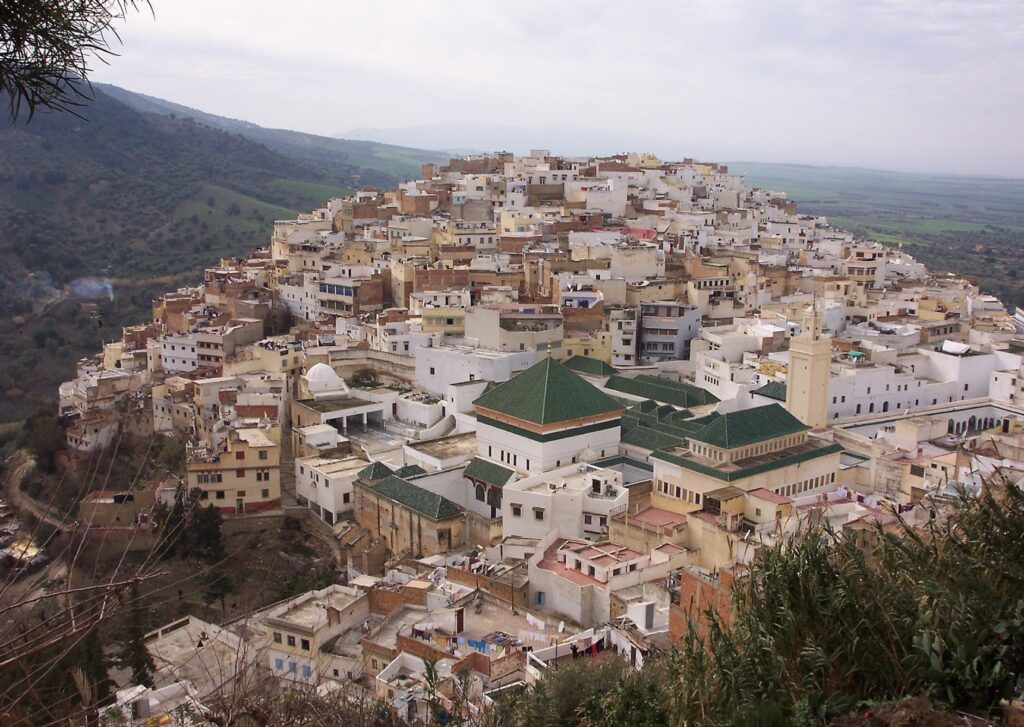
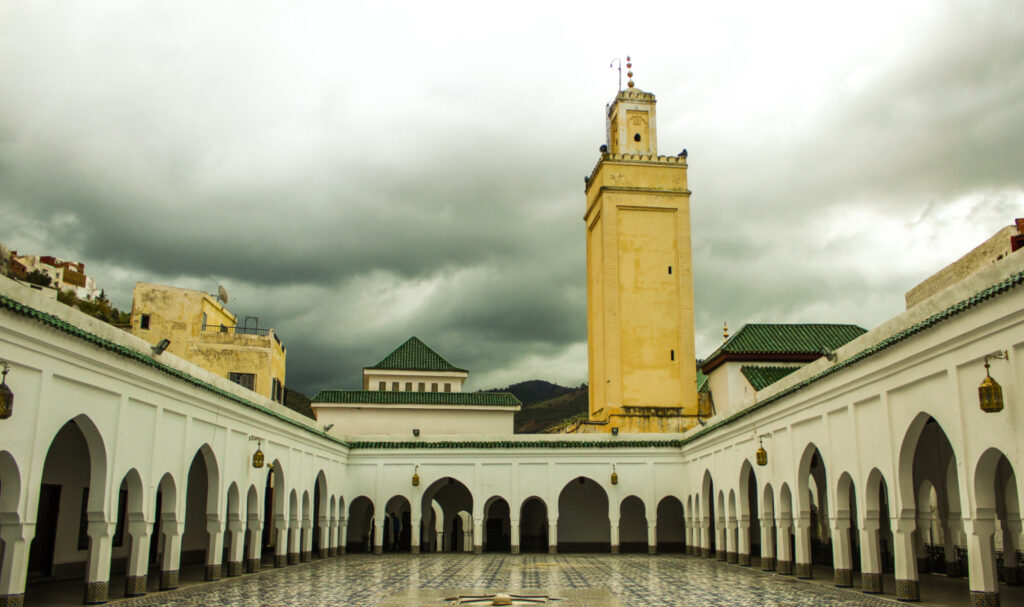
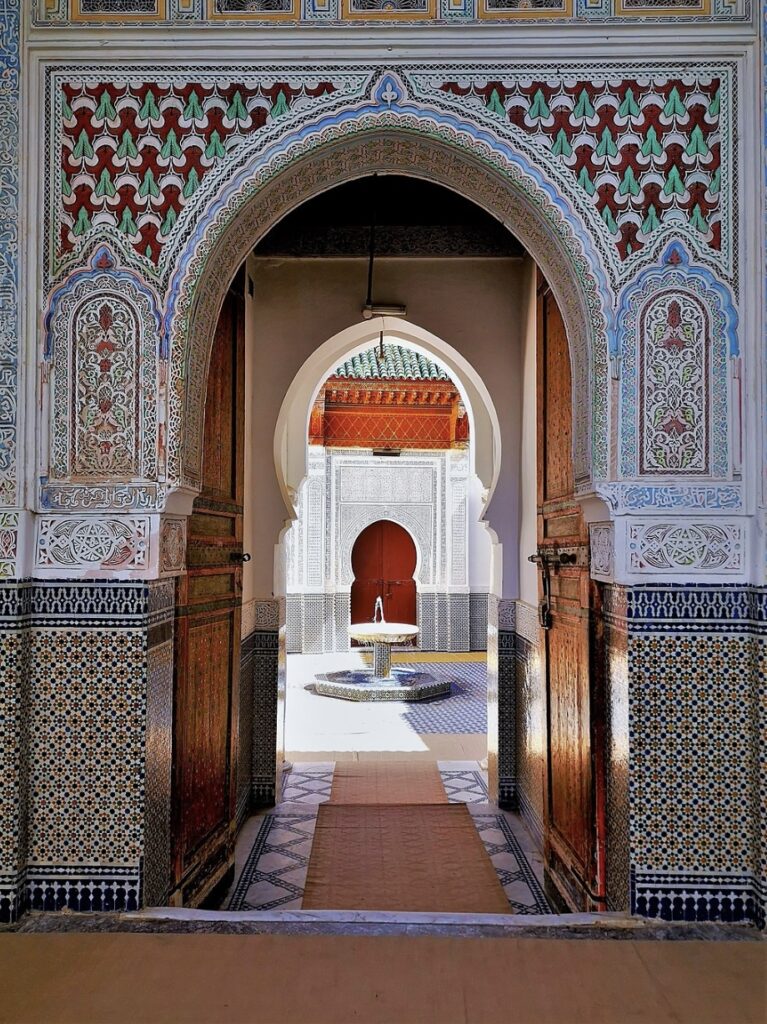
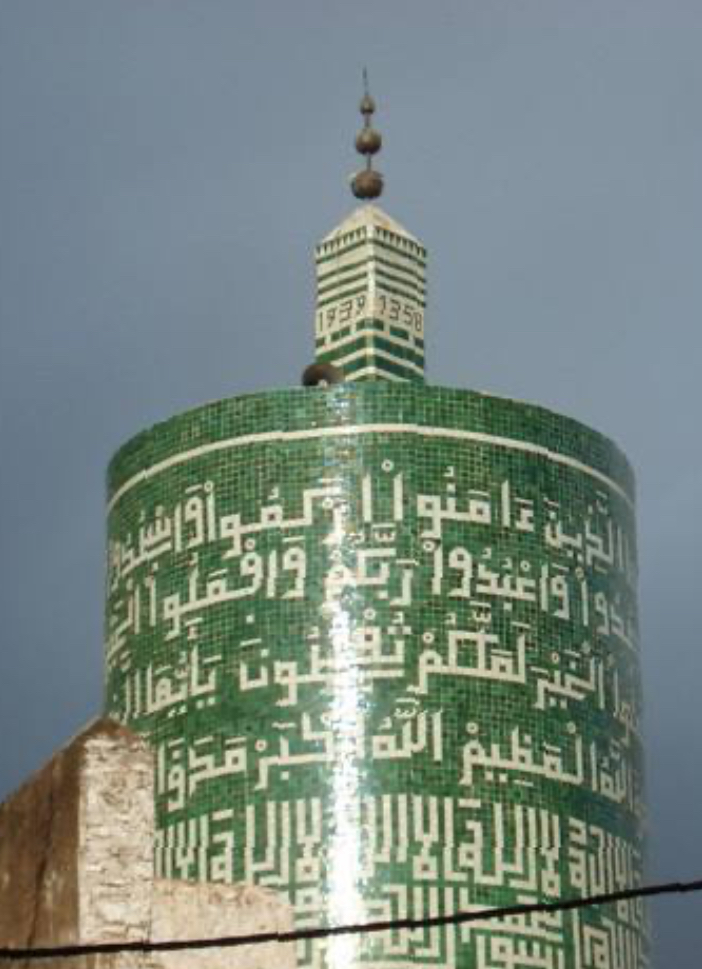
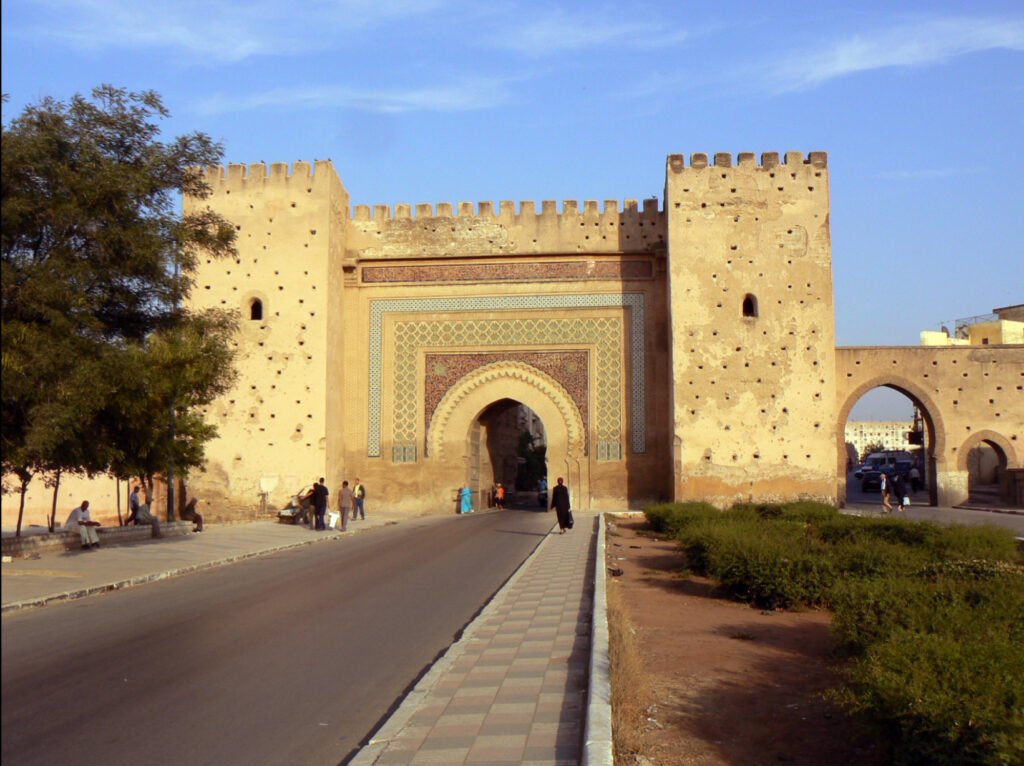
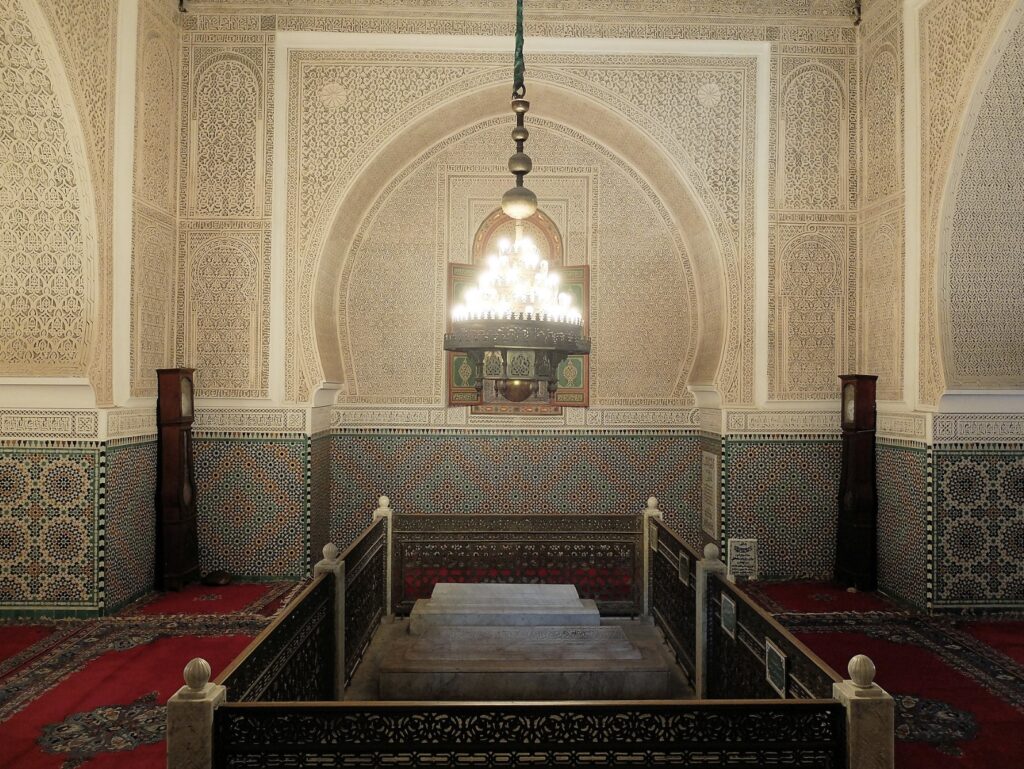
Afternoon:
- 2:00 PM – Explore Moulay Idriss
- After lunch, take a brief tour around Moulay Idriss. Visit the Mausoleum of Moulay Idriss I, the founder of the Idrisid dynasty and one of Morocco’s most revered saints (note: non-Muslims cannot enter the mausoleum, but you can admire the architecture from the outside).
- Stroll through the narrow streets of the town, experiencing its relaxed and spiritual atmosphere. 3:30 PM – Return to Meknes
- Drive to Meknes (a 30-minute drive from Volubilis). Spend the afternoon exploring Meknes, a UNESCO World Heritage Site and former imperial city.
- Visit the Bab Mansour Gate, one of the most beautiful and elaborate gates in Morocco, and the Heri es-Souani (Royal Granaries).
- Stroll through the Place El-Hedim, a square similar to Marrakech’s famous Jemaa el-Fnaa, filled with shops and street vendors.
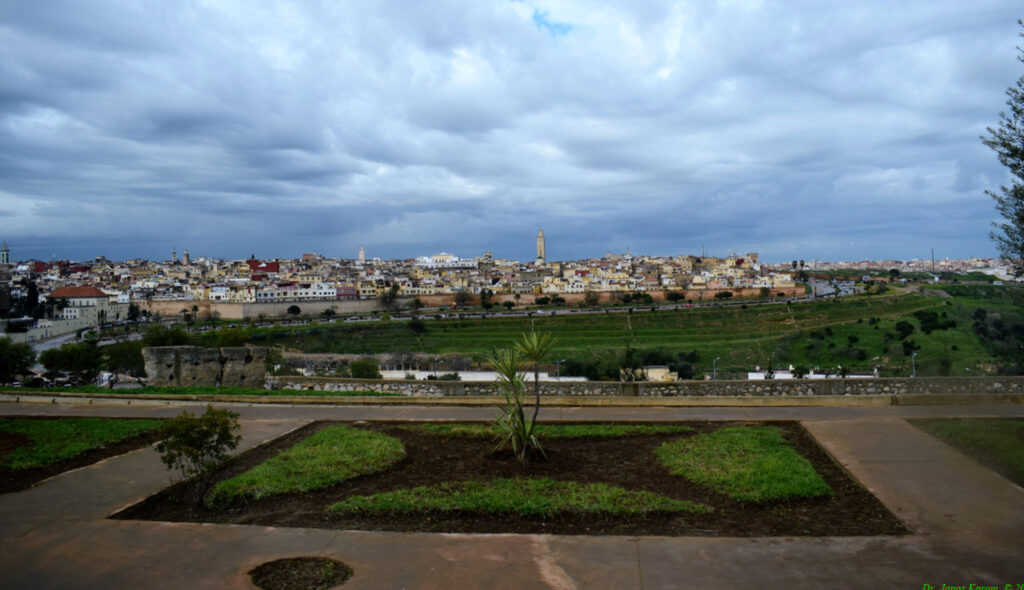
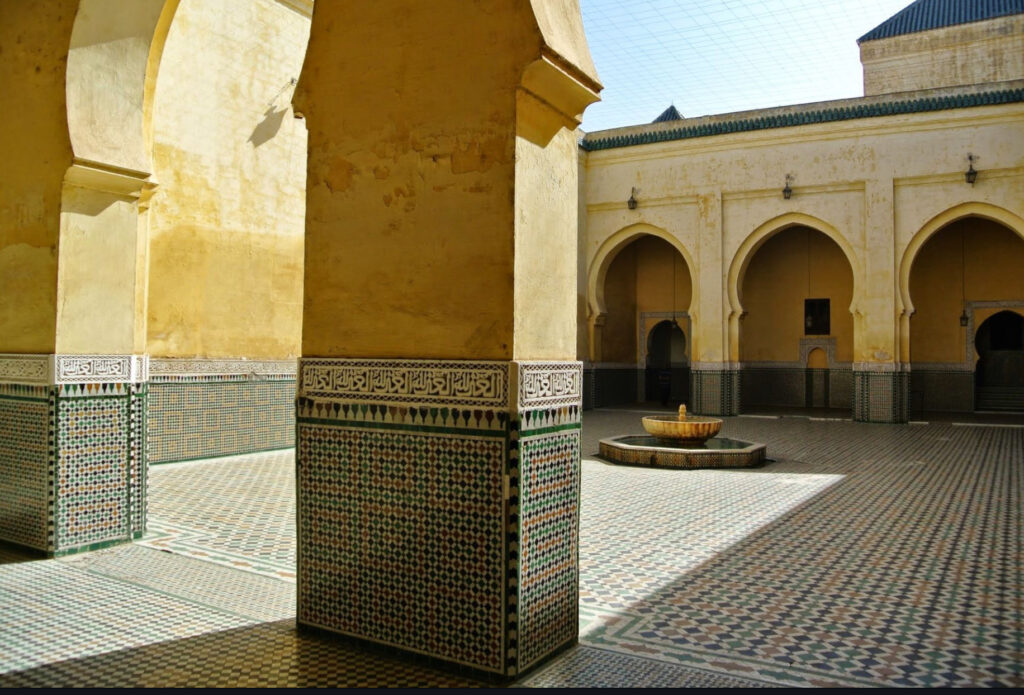
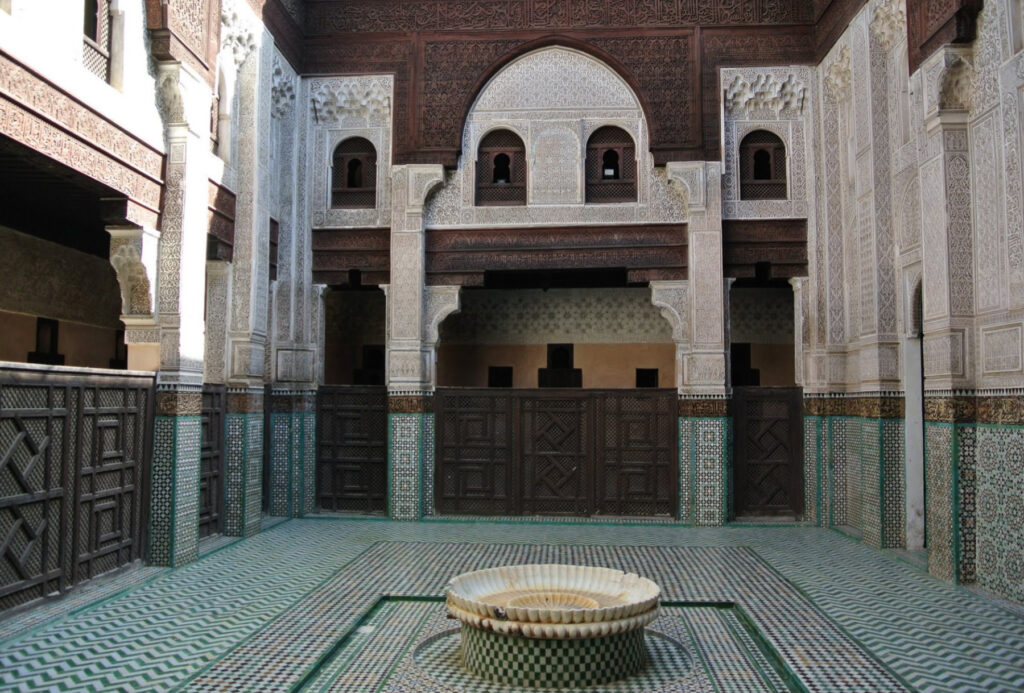
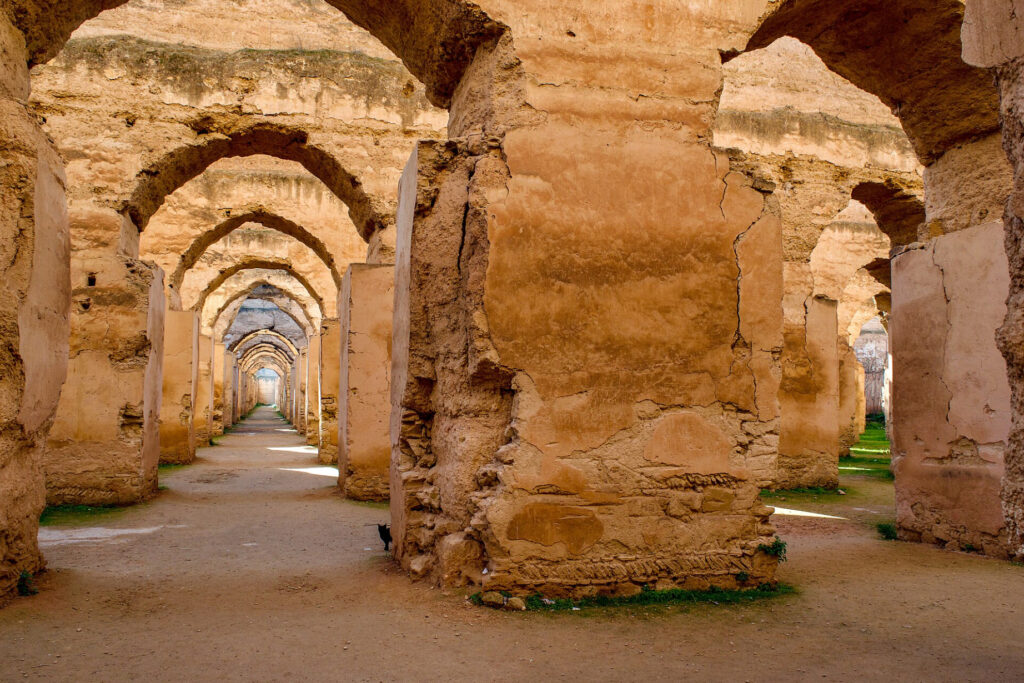
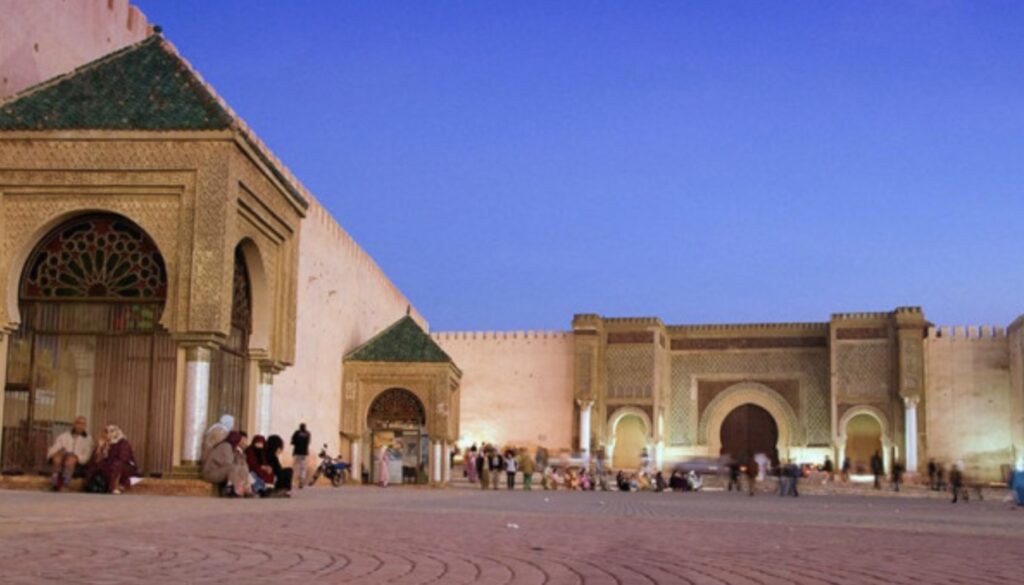
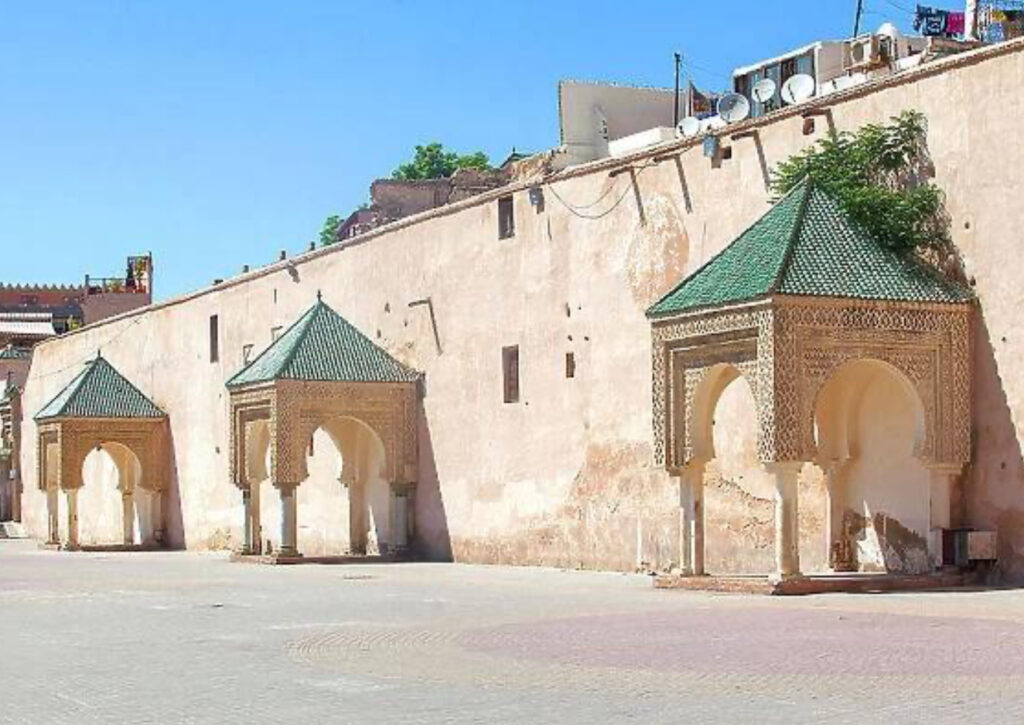
Evening:
- 7:00 PM – Dinner in Meknes
- For dinner, indulge in local Meknes cuisine. Consider trying Mechoui (slow-roasted lamb), Rfissa (chicken and lentils in a savory sauce served with shredded dough), or Harira (a traditional Moroccan soup with chickpeas and lamb).
- Recommended restaurant: Restaurant Dar Sultana – located in the old medina, this restaurant serves traditional Moroccan dishes with an authentic ambiance.
Accommodation in Meknes
For a comfortable and unique stay, here are two options:
- Riad Yacout
- A traditional Moroccan riad located in the heart of Meknes’ medina. It features a lovely courtyard, traditional decor, and a rooftop terrace with city views. The riad is a short walk from the major sights, offering a relaxing and authentic Moroccan experience.
- Château Roslane Boutique Hotel & Spa
- A luxurious boutique hotel set in a vineyard on the outskirts of Meknes. It combines modern comfort with a tranquil atmosphere. Guests can enjoy wine tastings, spa treatments, and beautiful views of the vineyards and surrounding countryside.
Local Food Scenes in Meknes
Meknes is known for its traditional Moroccan food, heavily influenced by Berber, Arab, and Andalusian cuisines. Key dishes to try in the city include:
- Kefta Tagine: Ground meatballs cooked in a rich tomato sauce, often with eggs.
- Makouda: Deep-fried potato fritters, often served with a spicy tomato sauce.
- Moroccan pastries: Don’t miss Chebakia (fried dough shaped into flowers and coated with honey and sesame) or Kaab el Ghazal (crescent-shaped cookies filled with almond paste).
This itinerary offers a balance between ancient history, cultural experiences, and local flavors, with a mix of ancient Roman heritage and Moroccan tradition.
